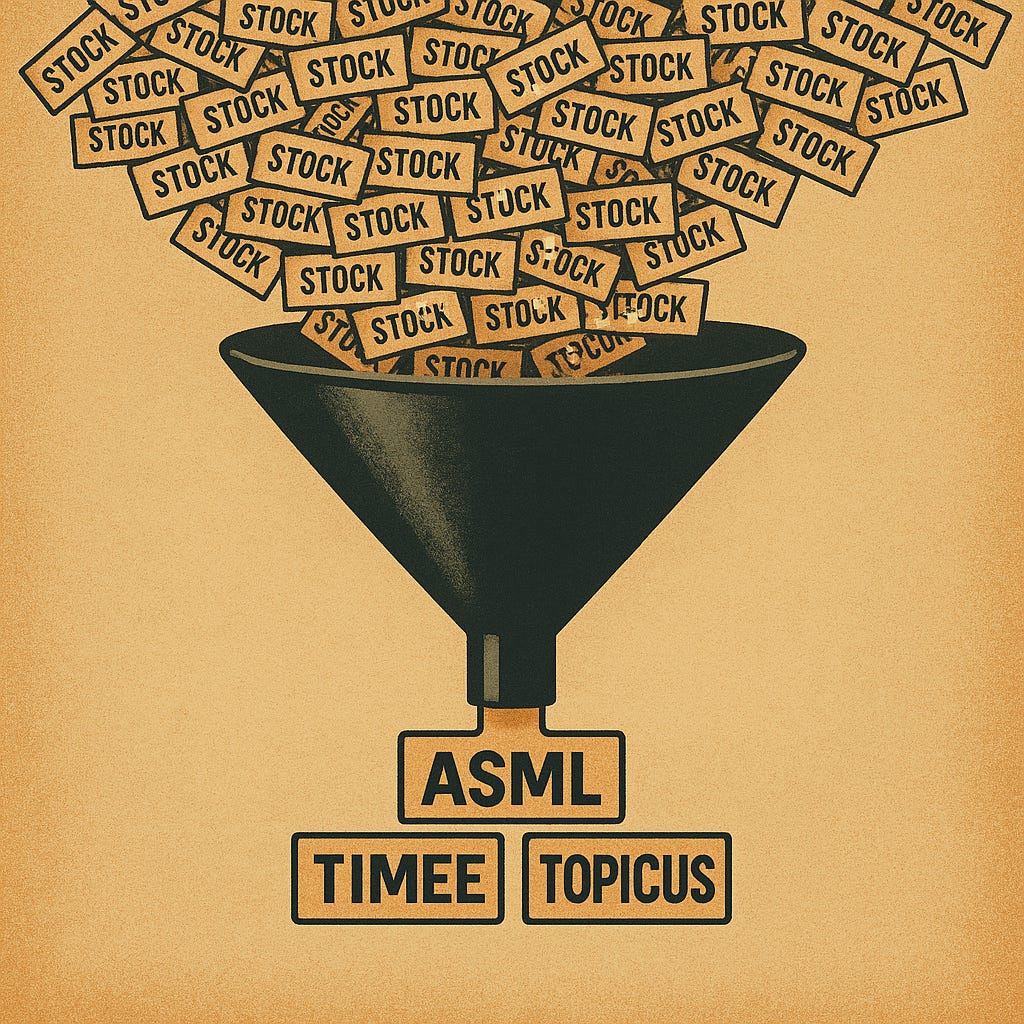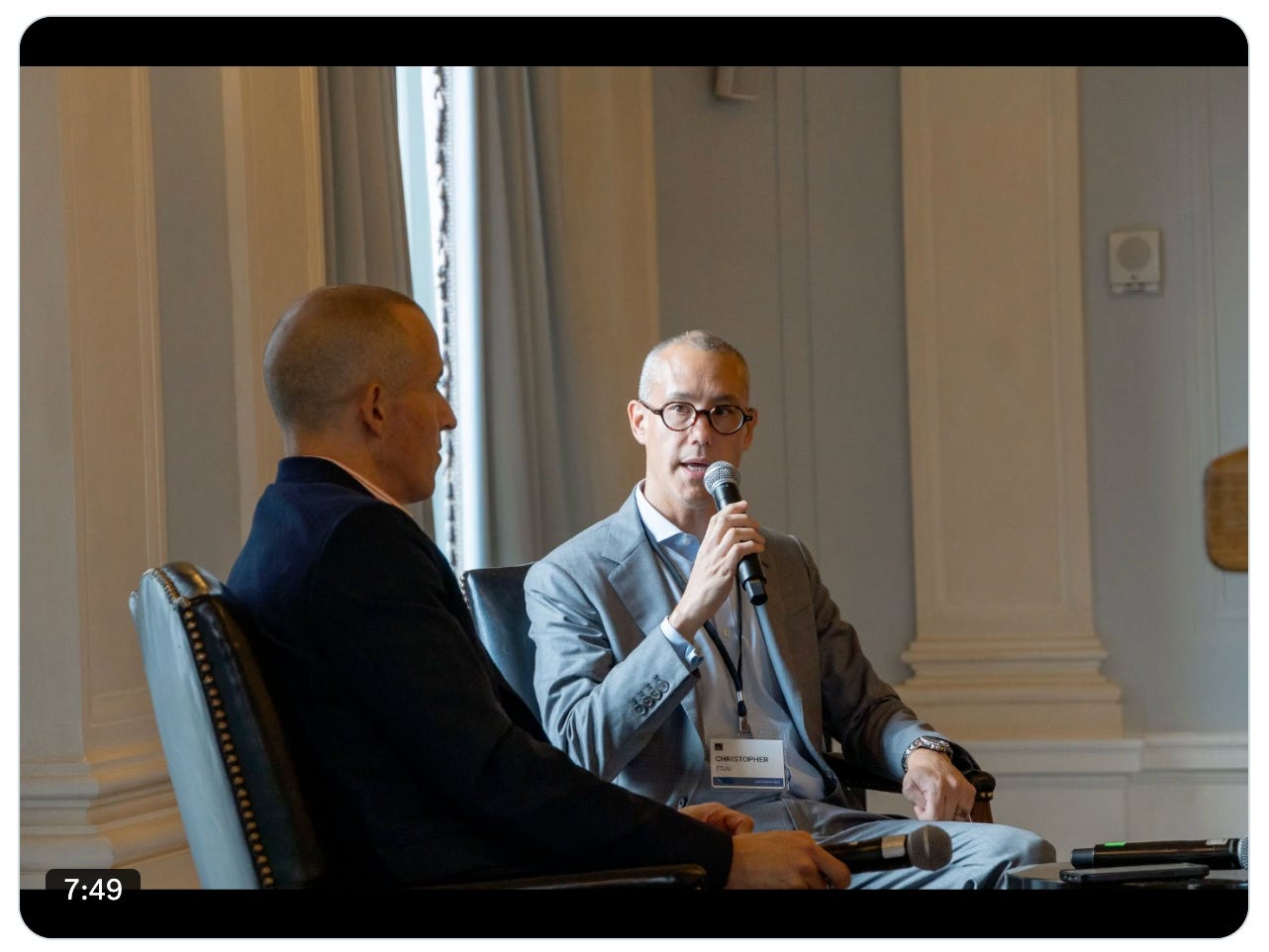Value Investing 3.0 & The Next Evolution of Stock Screening
Why the best investments never show up in traditional screeners—and how to find them anyway.
Note: The voiceover above is a custom-made version of the blog post created with ElevenLabs. It’s one of the perks available to paid subscribers, as I’m always focused on adding as much value to my subscribers as possible. Enjoy!
There’s something inherently satisfying about stock screeners. They give you the illusion of control in a messy, uncertain world. With just a few clicks, you can filter a universe of over 90,000 stocks down to a manageable handful.
A simple set of criteria – say, high returns on invested capital, strong free cash flow, low leverage, consistent growth – can magically produce a shortlist of names that look like they deserve your attention.
It’s like panning for gold, but instead of sifting through mud, you’re sifting through data.
Over the years, I’ve built quite a few of these filters myself. Some of them have names that sound almost too good to be true – my “high-quality screener,” my “40-30-20 screener,” the “Buffett screener,” and one I once called the “Hagstrom screener.”
Each of them reflected a different phase in how I thought about investing and how I tried to codify what made a great business. I’d tweak the criteria, run them across different geographies, and see what came up. Sometimes it was a company I already knew well. Other times it was a total unknown that sent me down a rabbit hole for days.
And that’s the beauty of screeners: they help you generate ideas. They don’t replace fundamental research, but they can help you stumble upon the ideas worth researching in the first place.
Every serious investor should, in my view, build the habit of screening regularly. It’s one of the cleanest ways to “turn over lots of rocks,” to borrow Peter Lynch’s phrase. I’ve written about the “rock turning” principle in this recent article:
[FREE] 7 Timeless Takeaways from Peter Lynch’s First Interview in Years!
Every so often, an interview surfaces that feels like a must-listen. Episode 211 of The Compound and Friends – where Josh Brown sat down with Peter Lynch – is one of those moments. For anyone who follows investing, seeing Lynch in a modern setting feels almost surreal. He rarely gives interviews these days, and when he does, it’s not for nostalgia. It’s…
You might not always strike gold – but you train your eye to recognize what gold even looks like.
That said, I have to admit I don’t screen nearly as often these days as I probably should. My idea generation process has shifted more toward following what great investors are buying, cloning portfolios, and watching emerging themes play out in real time.
In some ways, I’ve become less reliant on systematic tools and more reliant on intuition and pattern recognition.
But every time I do return to screening, I’m reminded of just how powerful it can be – when used in the right way.
Because here’s the thing: the very best investment ideas rarely show up on traditional screens.
If you’re filtering for low P/Es, high margins, and stable ROICs, you’ll mostly find companies that are already in their prime. They might be solid compounders, but they’re rarely mispriced. By the time a company checks all those boxes, the market usually knows it – especially in a market dominated by algorithmic trading.
You’ll rarely find a misunderstood emerging compounder through a screen like that. The next Amazon, ASML, or MercadoLibre won’t pop up in your “cheap and high-quality” filter – they’d have failed almost every one of those screens at the time when they were still incredible opportunities.
That paradox is what makes this topic so interesting to me. Screeners are essential tools, yet they’re inherently limited by the very logic that makes them useful. They surface what’s (seemingly) quantitatively attractive, not necessarily what’s qualitatively mispriced.
Which means that if you want to find the best investments – the ones that look expensive at first glance but are actually hiding enormous future value – you need to go a level deeper.
In this post, I want to unpack how I think about this trade-off, why “40x earnings” stocks often make the best investments, and how I’ve adapted my screening process to deal with that reality.
I’ll walk you through two kinds of screeners I use that have completely revolutionized how I look for ideas, and the two ways I apply them – a sort of 2x2 matrix that’s become my mental model for idea generation via screeners.
So let’s start with that central paradox – the fact that the best ideas don’t screen well.
Why the Best Ideas Don’t Screen Well
If you’ve been investing long enough, you’ve probably noticed a pattern: the stocks that become your biggest winners rarely look like winners when you first encounter them. In fact, they usually look expensive, uncomfortable, or just plain illogical. They defy neat classification. They don’t fit any of your screeners.
That’s because the market’s best opportunities are rarely found where the data already looks good – they’re found where the data is about to look good.
Steve Mandel, the founder of Lone Pine Capital, recently said:
“I don’t need an analyst to tell me when a 10 PE stock is cheap. I need an analyst to tell me when a 40 PE stock is cheap.”
That line captures a subtle truth most investors never fully internalize. It’s not hard to recognize a bargain when the numbers already scream “cheap.” What’s hard is recognizing when a company trading at 40 times earnings – or even 80x, or 100x – is actually undervalued because the earnings denominator is temporarily depressed or because future growth will make that backward-looking multiple vanish faster than you think.
A 40x earnings stock might be expensive today because the company is pouring every spare dollar into expansion, new markets, or R&D. On paper, it looks like overvaluation. In reality, it might be a business in the middle of a reinvestment cycle, temporarily suppressing margins while sowing the seeds for explosive profit growth a few years down the line.
Alternatively, it might simply be a company capable of compounding earnings at 20–25 percent for a sustained period – fast enough that what looks like a nosebleed multiple on trailing numbers compresses to a single-digit forward multiple within a few years.
Those are the kind of setups that produce the true home runs: the inflection-point investments where growth, margins, and/or returns on incremental capital (all) start to accelerate.
But how do you screen for that?
Traditional valuation filters will never catch these opportunities because the numbers look wrong by design. They penalize reinvestment. They ignore optionality. They treat all high multiples as dangerous when, in fact, some are simply a reflection of quality or accounting artifacts that hide immense future value creation.
That’s why I find Christopher Tsai’s concept of “Value Investing 3.0,” which he recently described at a MOI Global Latticework 2025 session, so useful. He describes it as a kind of intellectual evolution within the discipline:
Value 1.0: Ben Graham’s era of “cigar-butt” investing – buying statistically cheap assets for less than their liquidation value.
Value 2.0: Charlie Munger’s realization that it’s better to buy a wonderful company at a fair price than a fair company at a wonderful price.
Value 3.0: A framework for the modern, software-driven economy, where GAAP earnings are intentionally suppressed by visionary, founder-led businesses investing heavily in technology, ecosystems, and customer acquisition.
Tsai argues that these companies – think of them as long-duration compounding machines – are building the dominant ecosystems of the next decade. Their current income statements don’t reflect their true economics because they’re reinvesting at returns that will compound internally for years. Traditional multiples therefore fail to measure what matters: the scale and quality of the opportunity set, the reinvestment runway, and the durability of competitive advantage.
Seen through that lens, “40x earnings” stops being a warning sign. It becomes a clue that the business might be playing a different game.
I recommend watching the entire sequence here (link).
This also explains why catching inflection points – moments when growth, margins, or capital efficiency are about to rise structurally – tends to produce the highest returns. If you can identify those transitions before they show up in the reported numbers, you’re effectively front-running the change in investor perception that will eventually re-rate the stock. That’s not speculation; it’s recognizing the time lag between reality and recognition.
Which brings us back to the practical problem: how do you build a screener that reflects this kind of thinking? How do you construct a quantitative filter that helps you find qualitative change?
That’s where I think most investors get stuck – and where I started rethinking how to use screeners altogether. Instead of trying to find “cheap” stocks, I began looking for contextually mispriced ones. I started asking: relative to its own history, is this business cheap or expensive? Relative to what it could earn in a few years, is the current valuation misleading?
To answer those questions, I needed a way to add context to raw multiples …
The full story starts here:
The rest of this post covers the structure of the brokerage business. If you’re serious about sharpening your investing edge, the full post (and all my previous premium content, including valuation spreadsheets, deep dives (e.g. well-known mid- and large caps such as LVMH, Duolingo, Meta, Edenred as well as more hidden gems such as Tiger Brokers, Digital Ocean, Ashtead Technologies, InPost, Timee, and MANY more) and powerful investing frameworks. is just a click away. Upgrade your subscription, support my work, and keep learning.
Annual members also get access to my private WhatsApp groups – daily discussions with like-minded investors, analysis feedback, and direct access to me.
PS: Using the app on iOS? Apple doesn’t allow in-app subscriptions without a big fee. To keep things fair and pay a lower subscription price, I recommend just heading to the site in your browser (desktop or mobile) to subscribe.



![[FREE] 7 Timeless Takeaways from Peter Lynch’s First Interview in Years!](https://substackcdn.com/image/fetch/$s_!A9d6!,w_280,h_280,c_fill,f_auto,q_auto:good,fl_progressive:steep,g_auto/https%3A%2F%2Fsubstack-post-media.s3.amazonaws.com%2Fpublic%2Fimages%2F49802686-0c08-4c7d-9259-737c3e42799e_1536x1024.png)

